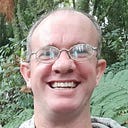A development story
My first theory of change went like this: I’ll make drum and bass music, become rich and famous like Goldie, and then help the world with all my heaps of money and have made good music in the process. So I set about in earnest learning the craft of music making, putting my songs online, learning to dj to promote myself. But there was a fundamental flaw in my strategy: by the time I was working to become a musician, there was no money left in the trade, or you had to work extremely hard and be extremely creative, travelling constantly to do well.
My second thought was to become a primary school teacher, and inspire kids to create a better world. But unfortunately I couldn’t even manage a classroom in Mangere, let alone inspire anybody. That attempt lasted six months.
Finally I ended up in Libraries (yes ended up). I wish that I could say it was a really intentional move, but unfortunately I had drifted more like a dandelion seed from one thing to the next. I look at people who are having a huge impact in their twenties and wonder how they do it. I guess I just didn’t have the formative experiences to be ready for that then.
I really didn’t understand the potential of libraries when I started, I thought I might do acquisitions and buy all the interesting books or something, a thought that makes me laugh now when I look at what I’m actually doing. The first time I really got the potential was when I heard a speaker from New York Public Libraries talk about NYPL map warper, a crowdsourcing project they were doing to get New Yorkers mapping google maps onto historical maps, creating historical layers onto google maps. This in itself is very cool, but what captured my imagination is that thousands of New Yorkers were engaged in doing this. Activating thousands of people towards a shared outcome is what makes me excited.
My first major role at Auckland Libraries was in learning services at Auckland Central Library, and this formed my view of what libraries are really about; the mainstay of my role was person to person, about knowledge sharing and skill building. I helped people to learn how to use digital devices and software for the most part. But we did some really interesting work like teaching Kaumatua and Kuia (elders) from local Marae how to use facebook, keeping an eye on their Mokopuna, and browse the internet to have a look at the websites of other Iwi and see how the competition was doing. I started to really get interested in innovation, creating new and exciting services often using existing assets.
I was tasked with developing the first makerspace at Auckland Libraries with Baruk Jacob and my then team leader Penny Dugmore. We comandeered a kind of closet in the back of the central library and started offering programming using robotics kits, PC’s running on linux, and a 3d printer that regularly broke down, needing regular trips to a West Auckland warehouse for recalibrating with the experts.
This is where I got perhaps my first lesson in design thinking before I knew what that was: we spent most of our budget on the PC’s, figuring that a PC could be used for almost anything, but the people in the space used these the least; they went for the robotics kits and 3d printer because you can see what to do with these tools; a PC is just overwhelming and the open source software we had loaded on there had a steep learning curve, so people mostly just wanted to go on facebook. The whole time I knew that we needed to engage with and learn about our customer, but I couldn’t understand how to frame who our customer was, so we put it off and developed the service the old fashioned way, by trial and error.
to be continued
